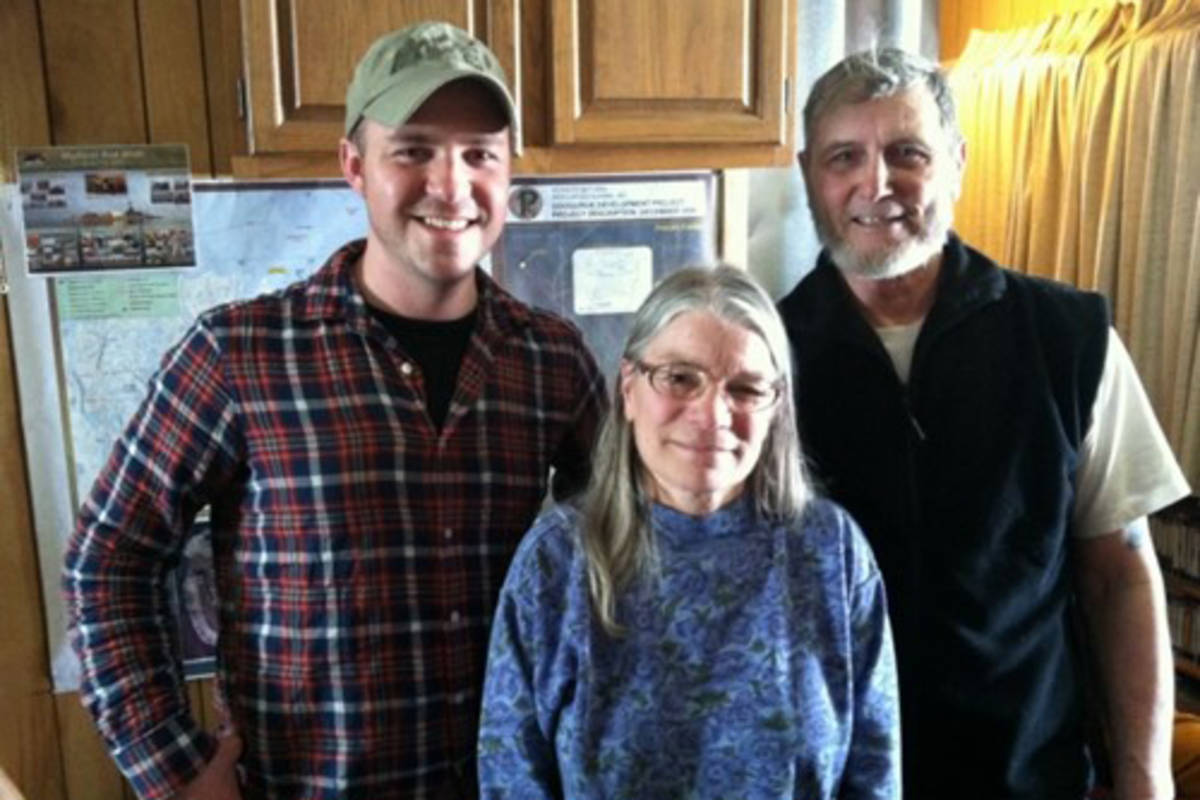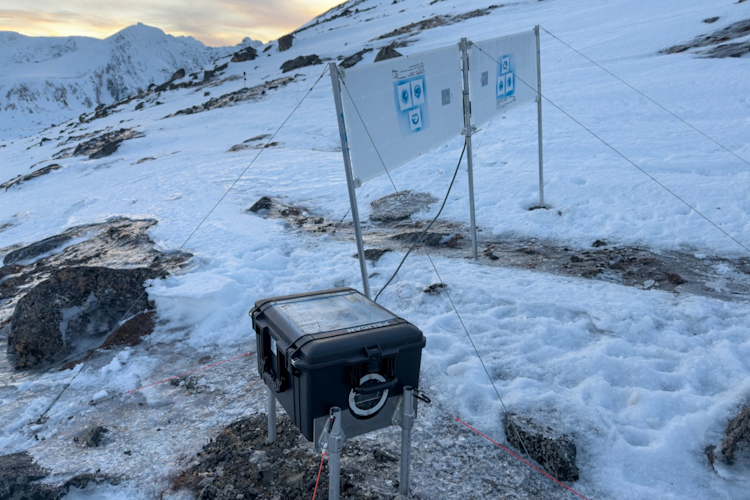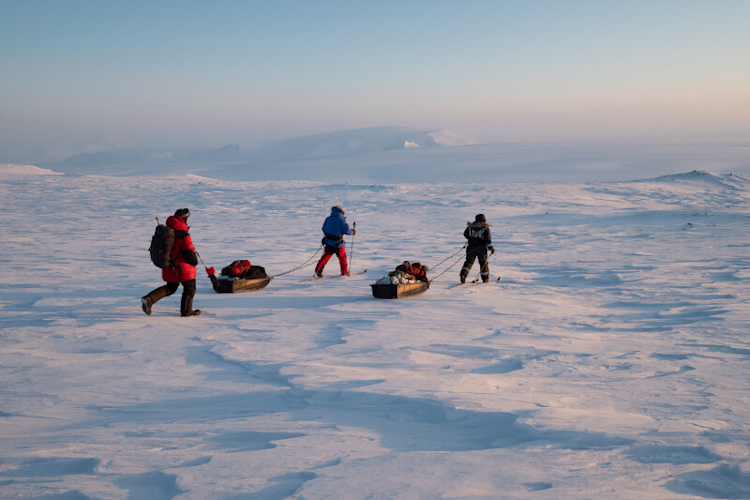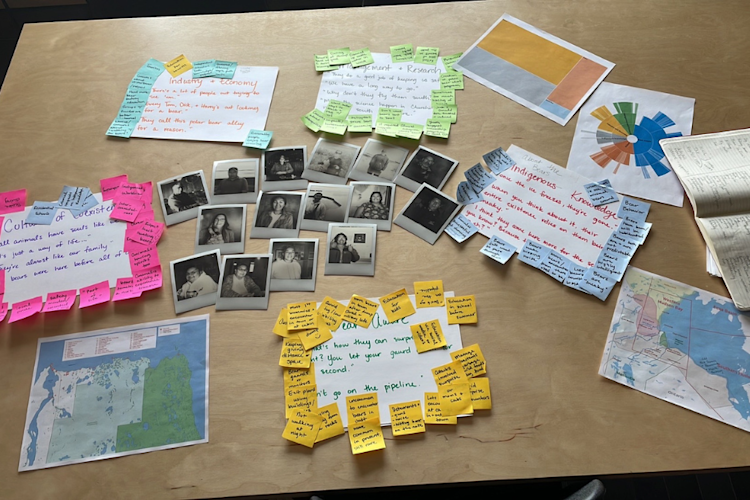After a several years of traveling to northern Alaska chasing polar bears, it was inevitable that we should hear tales of the Helmericks family.
Many people work on the flat, frozen expanse known as the North Slope, but in a practical sense none of them "live" there. Most work shifts of about two weeks and live in heated camps suspended above the tundra, filled to the brim with hot meals and snacks shipped from far away (some of the best fruit I've had was in the Arctic). Don't get me wrong, these are some tough folks, but generally the work on the Slope takes places in something of a space capsule, safe from the elements.
The Helmericks, however, take a different approach. In camp, we heard about a single family who lived year-round on the Slope—homesteaders in the heart of the Arctic. In my mind I immediately tried to imagine the type of person who would choose to live in such a place, so frozen and far from the rest of the world. I immediately concocted an image of a true hermit couple: two quirky extremists perhaps, seeking a purer life, living off the grid while throwing their modern comforts into a ceremonial fire.
Of course, in a land full of endless white, even solitary hermits attract a good deal of attention. So after hearing that the retired Helmericks occasionally entertain guests, our curiosity grew and we decided to make the 44-mile round trip on snow machine and pop in for a visit.
We put on our heavy parkas and set out to the Colville River Delta. The temperature that day got up to a blistering 25 degrees F, far too warm for such heavy gear. The snow was a bit softer due to warm weather, but was still a far cry from the smooth snow machining I've known down south. Several hours of wash boarding left me rattled and sore for a day or two afterwards.
After riding along the coast, we finally saw their place in the distance. As we drove in, it had the feeling of a ghost town. There were a number of buildings spaced out across the property, many of which were snowed in and looked as if no one had been inside for a while. We saw the first signs of life when a golden retriever jumped up from where it had been napping and bounded over to show us the way. The pup then jumped right on the moving snow machine with BJ, insisting on doggie kisses and a ride.
Jim and Teena Helmerick met us at the back porch and welcomed us in. My preconceived notions of a counter-culture couple ready to preach to us the doctrine of solitary living began to dissolve as Teena offered us banana bread and coffee. It turns out both Jim and Teena are natives of the Arctic. Teena was raised in Barrow, Alaska, where her father was a missionary. Jim's dad was a bush pilot who found he could make a living guiding big game hunts, providing fish to local villages, and running an air taxi. We looked at pictures of kids, grandkids, beloved airplanes, and old time family photos. BJ observed that Jim likely married the prettiest girl in Barrow.
As a young couple, Jim and Teena took on the family business of commercial fishing and settled permanently on the Colville Delta—the only house for the more than 300 miles between Barrow and Kaktovik. Once a year they ordered all their supplies, which were then flown in on a large turbo-prop plane. In payment they sent back many tons of fish on the flight. Over the years they started several companies, and Teena worked off and on in the oil industry. With building supplies short on hand, they build a good deal of their home from industrial excess. They raised four boys, all of whom went on to be quite successful.
Both Jim and Teena are avid naturalists and archeologists. The entire upstairs is a museum to display museum collections including many Pleistocene creatures and native Inuit artifacts. You had to be careful not to trip over mammoth tusks on your way to see the collection of more than 100 native harpoon heads. One of their sons took to taxidermy work. The result is room after room of Arctic birds and furs, plus others traded from around the world.
I thought it funny that in rooms filled with mammoth jaws, muskox, and Arctic grizzlies, Jim spent the most time showing us his collection of collared lemmings, apparently a personal favorite. There were also many personal artifacts: a hand-crafted backpack made by Jim's dad, first mukluks made by a local friend, and a ground squirrel coat for special occasions.
They told us fun stories about the local wildlife (the only neighbors they had for many years). We got the most recent news on squabbles between last year's loons. And we were shown all the best nesting habitat for brant and other waterfowl.
Some years ago, a young polar bear adopted their family and stayed on the property for a time. He seemed to like the front porch and didn't mind Jim working around the corner. Only the dogs disliked the visitor, as they had to stay indoors.
Of course, like any story involving wildlife, there are accounts of change. Once there was only one pair of ravens in the area, but with more people and trash dumps in the north, the population has exploded, reeking havoc on nesting birds that have no real defense against these unusually intelligent predators.
Jim and Teena said there was once a family of wolves that followed a herd of caribou in the area, but overhunting has left only a few, sparsely distributed caribou and no more wolves. Polar bears were once a very rare sight on land, but now more stay over the summer waiting for the ice to return. While many of us only guess at the effects we have on nature, these folks continue to see them first hand.
Visiting Jim and Teena Helmericks was one of the highlights of our trips to the Slope. Rarely do we meet ordinary people who choose to live alongside the extraordinary world of polar bears. Their way of life challenged my view on living with nature. They saw the value in all the resources around them, and enjoyed quietly living in one of the most dynamic habitats on Earth. This was the life they had always known, and they took to naturally without any assumption of superiority. Instead they exuded gratitude for the beauty and bounty of the land around them.
Now with the town of Deadhorse and the oil fields nearby, Jim and Teena aren't as cut off as they were in the past. It is expensive to get things there, but not as hard as it was before. Their home is still heated by a vintage stove, but they have power that runs off a generator for most modern amenities. The main thing they lack is a road to get places. They have their own airstrip, and they either fly to an oilfield pad to get to their truck or go by snow machine.
Of course, we can't all move to the Arctic or flock to wild places. But I was inspired by the Helmericks to challenge myself by stepping out of my own space capsule every now and then, even when a bit uncomfortable. The experience also reminded me to appreciate all the resources I enjoy that come from the land around me, while remembering that I am not the only living thing that needs them.
Photo caption: Jay Olson with Teena and Jim Helmerick, year round residents of Alaska's North Slope.
















